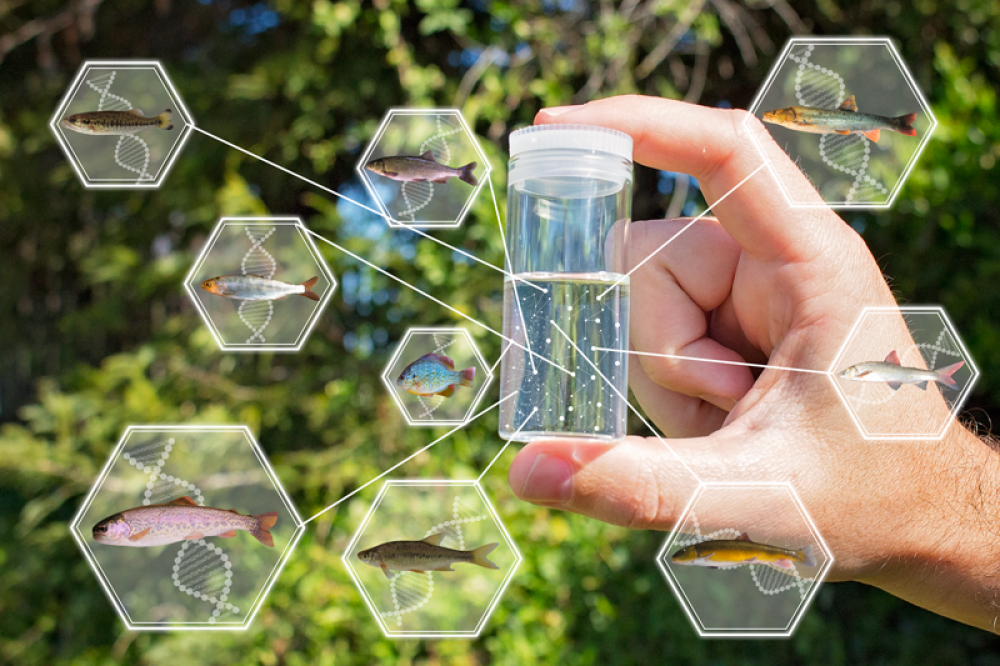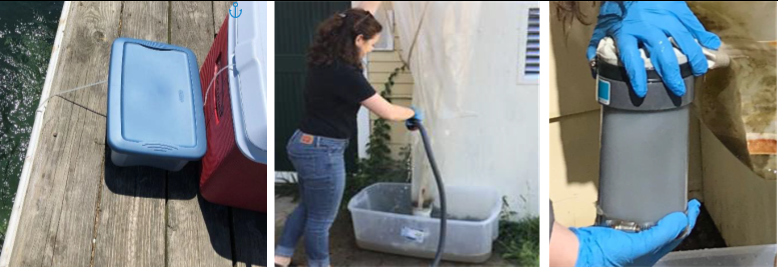The Wrack
The Wrack is the Wells Reserve blog, our collective logbook on the web.
The Wrack is the Wells Reserve blog, our collective logbook on the web.
Fish are constantly shedding DNA into their environment. They lose scales, secrete mucus, eliminate waste, and release gametes (sex cells) into the water. Because every species has its own DNA signature, we can collect water samples, analyze the DNA they contain, and determine which species are living nearby. Cool, right?

From June to September 2019, reserve researchers collected water samples once a month from the dock at Wells Harbor—the same location where we have been collecting plankton in nets for many years. A common method for collecting environmental DNA (eDNA) samples is by simply scooping some water into a bottle, but we thought three other collection methods might be more effective:

We compared the results from each eDNA collection technique, and the winner was… net rinse water. We detected way more species by this method than the others.
| Continuous Water Pump | Net Rinse Water | Biomass Sample |
| Menhaden | Menhaden Cunner Red Hake Rock Gunnel Sand Lance Silver Hake Windowpane Flounder Winter Flounder Atlantic Halibut Atlantic Mackerel Atlantic Sturgeon Bluefish Fourbeard Rockling Grubby Sculpin Sea Raven Striped Sea Bass |
Menhaden Cunner Red Hake Rock Gunnel Sand Lance Silver Hake Windowpane Flounder Winter Flounder |
Why did we detect so many more species by rinsing down the plankton net? Well, when we submerge the net it acts like a giant filter in the water column, collecting not only plankton but also biological remnants carried by thousands of gallons of water over the course of a full hour. By rinsing the walls of that filter, we got a nice hearty, concentrated “DNA soup.” Compared to pumping a few liters of water straight out of the harbor, unfiltered and unconcentrated, it's a much better method.
We also found that eDNA sampling detects way more species than our traditional plankton-picking method.
While eDNA revealed more species, catching fish larvae directly in a net lets us measure them, figure out their age, and know exactly where they were when we caught them. eDNA, on the other hand, might come from a fish swimming offshore whose DNA flowed into the estuary on an incoming tide. While eDNA helps us detect more species, it doesn’t tell us anything specific about the individual fish the DNA came from.
eDNA and traditional larval fish methods complement one another and provide a more complete picture of an estuarine fish assemblage. Which method to use will depend on the kinds of questions we are exploring.